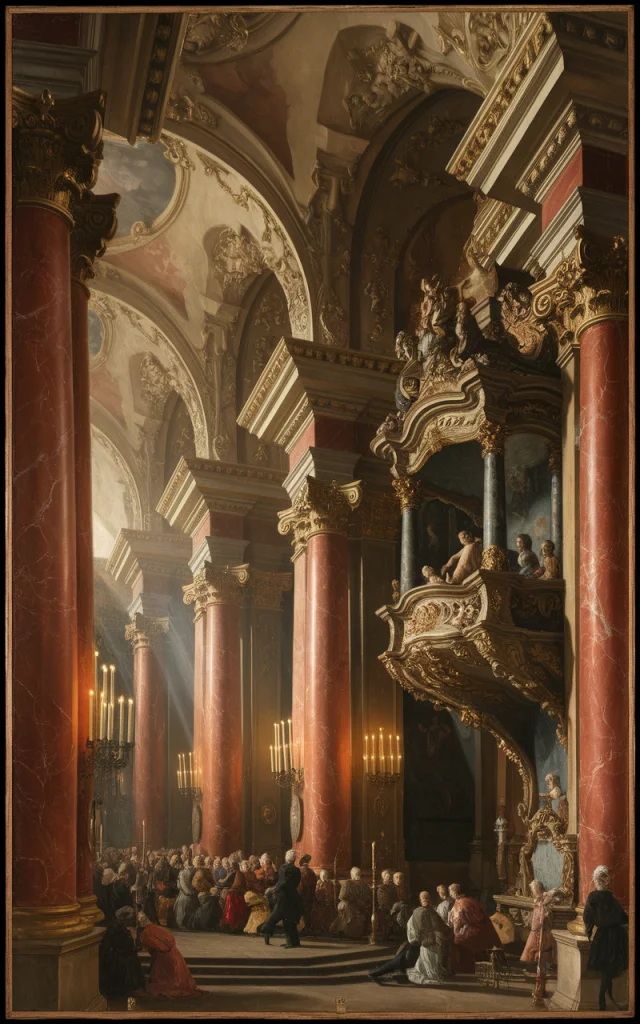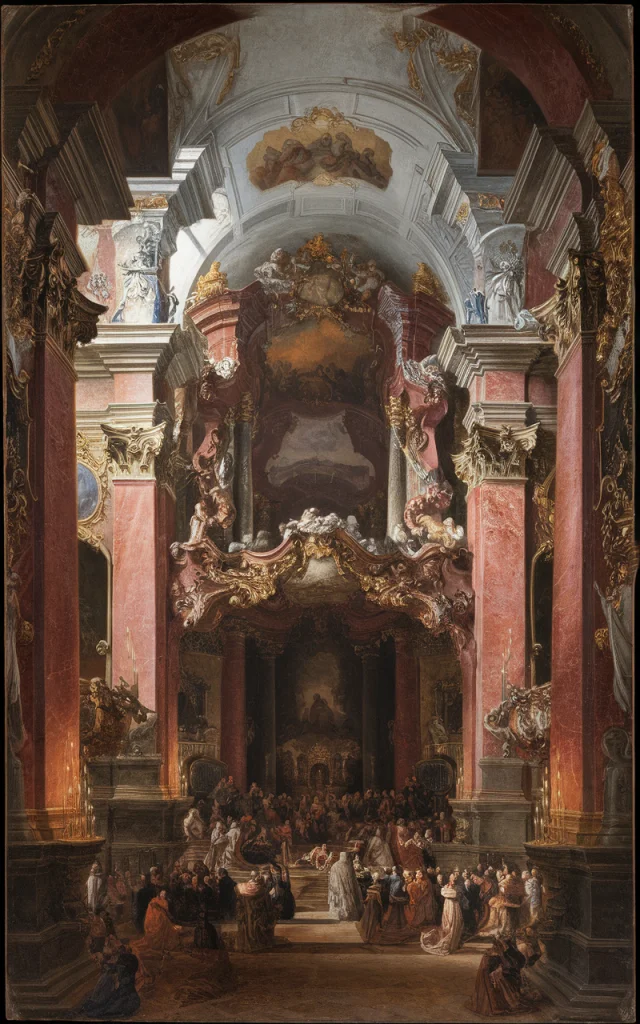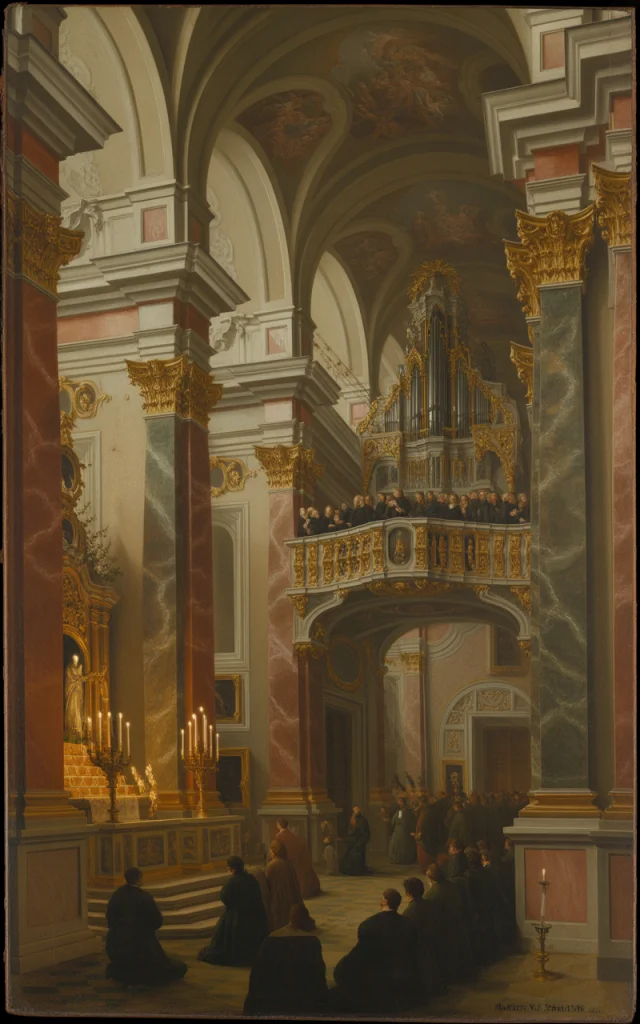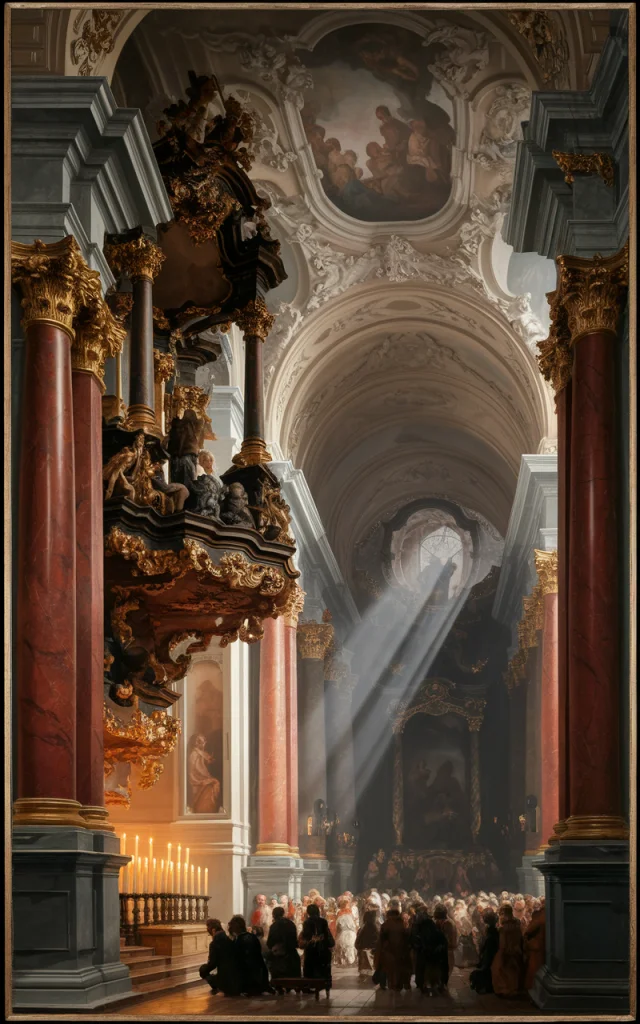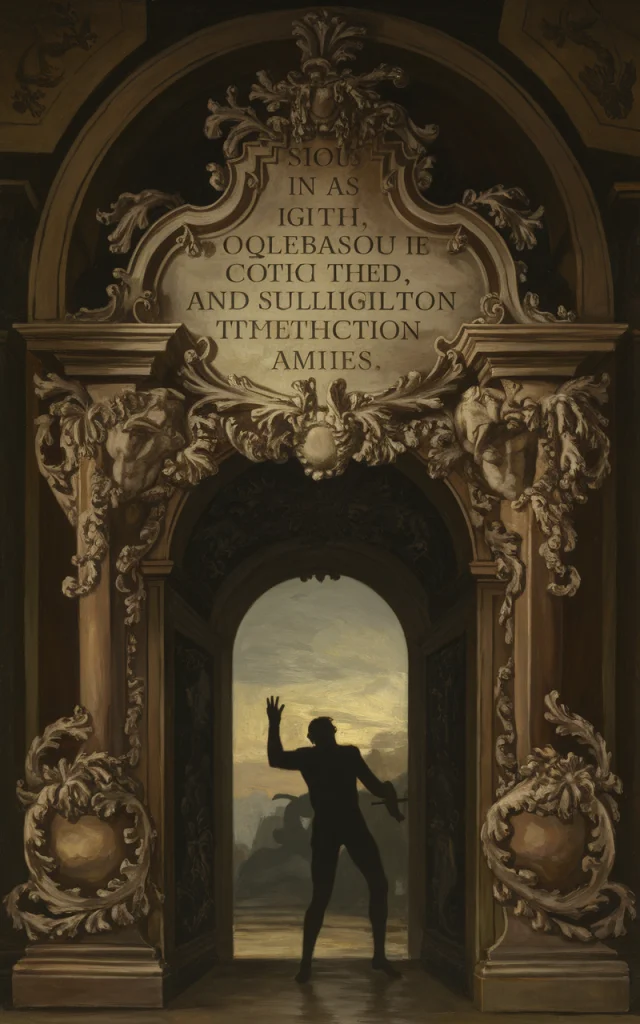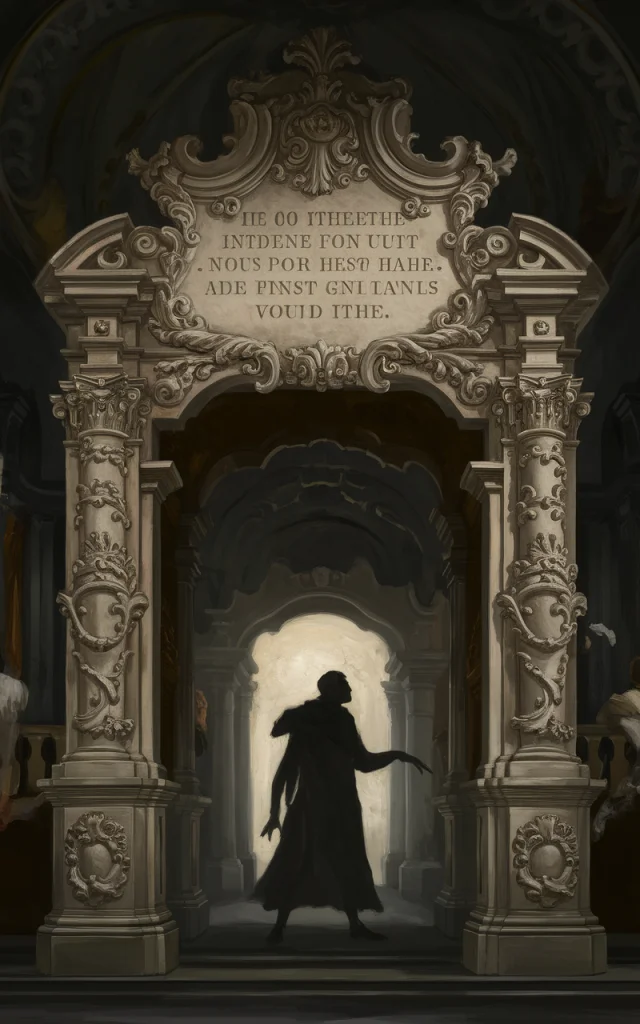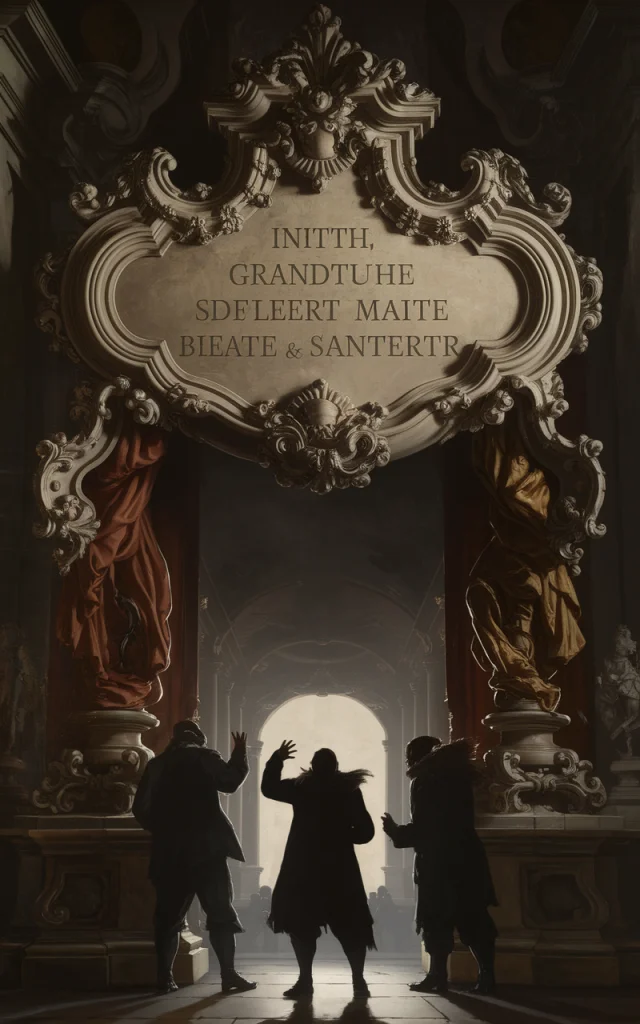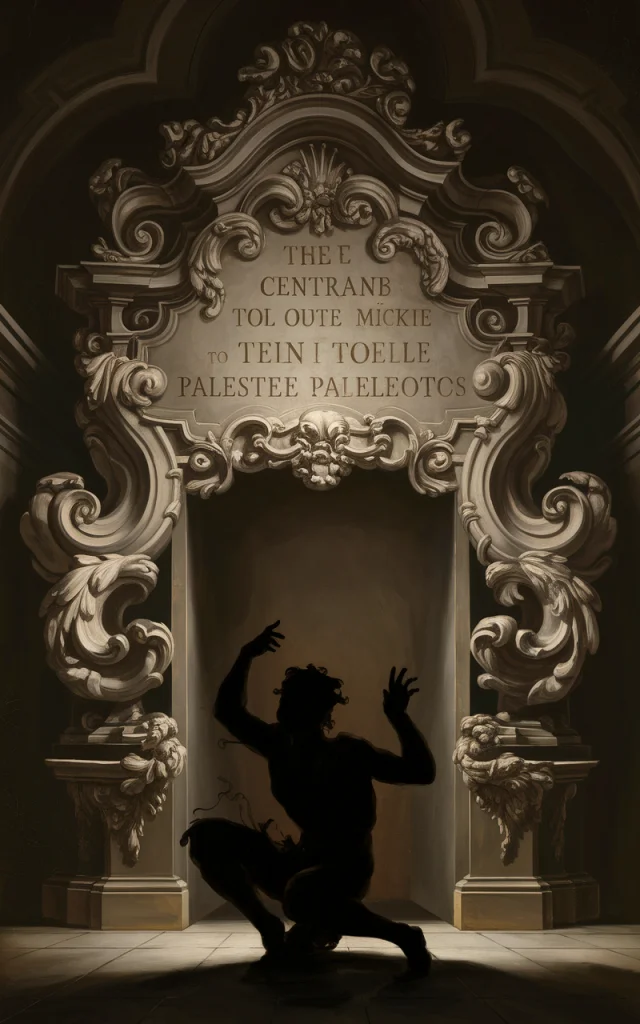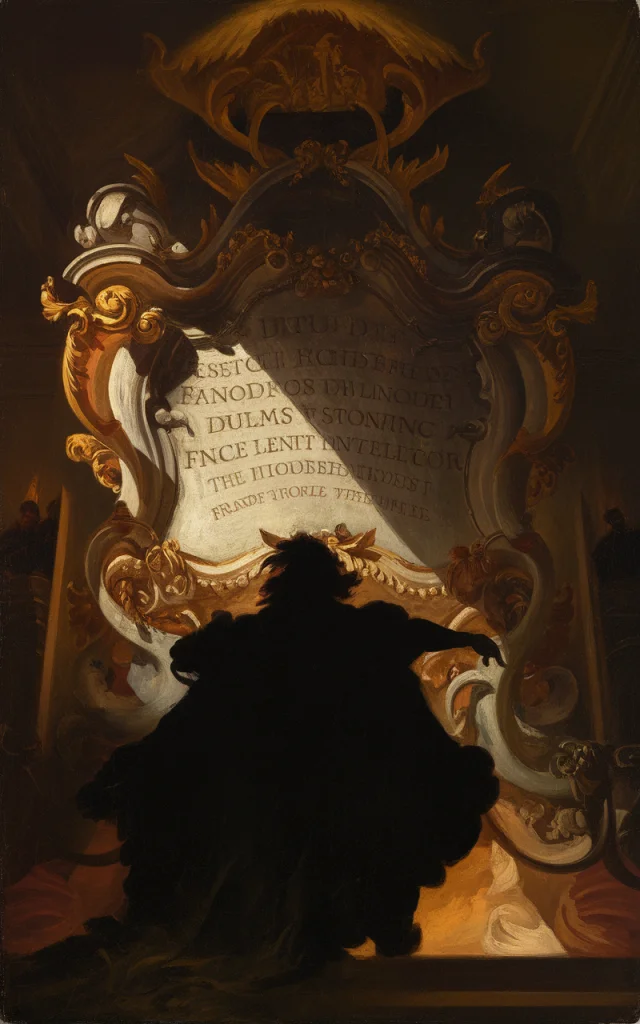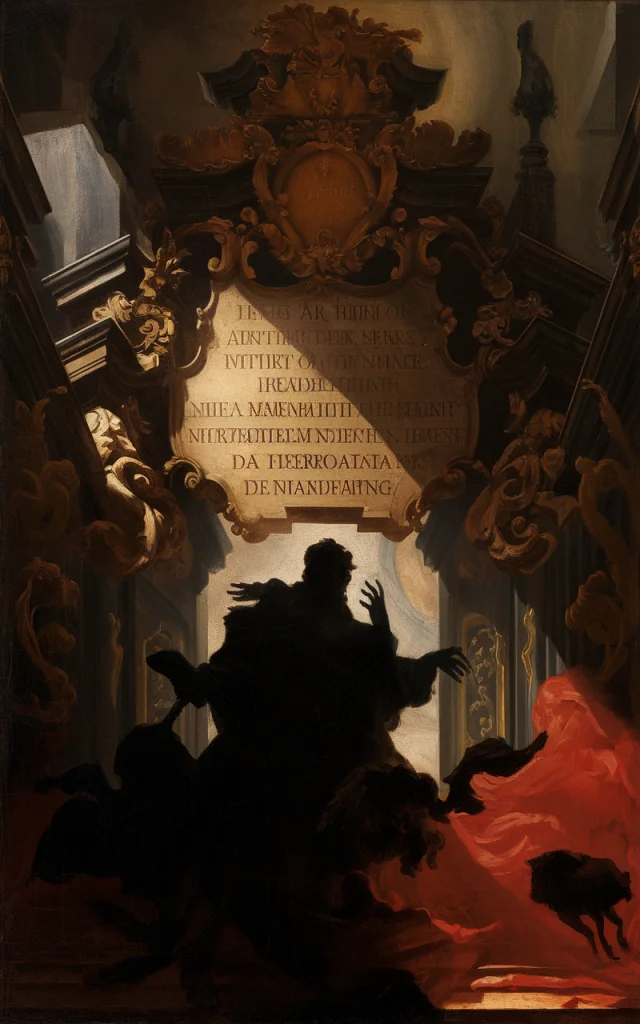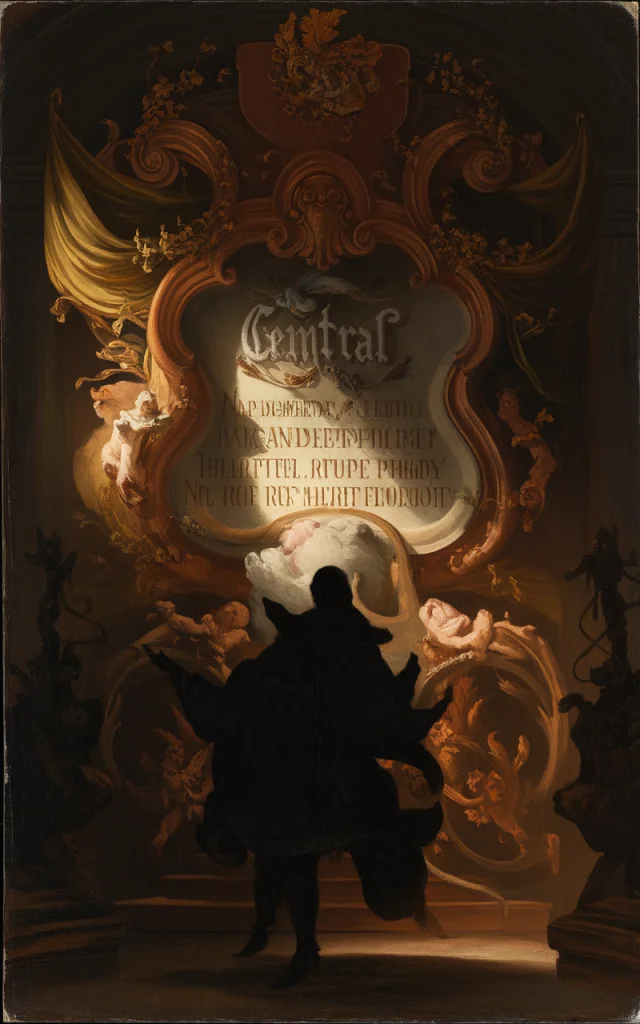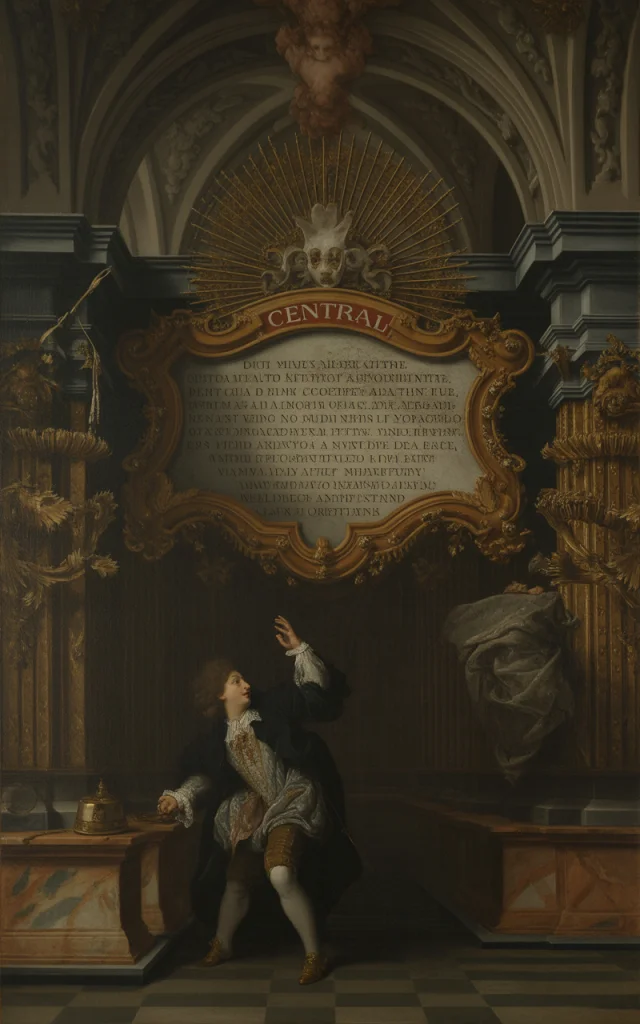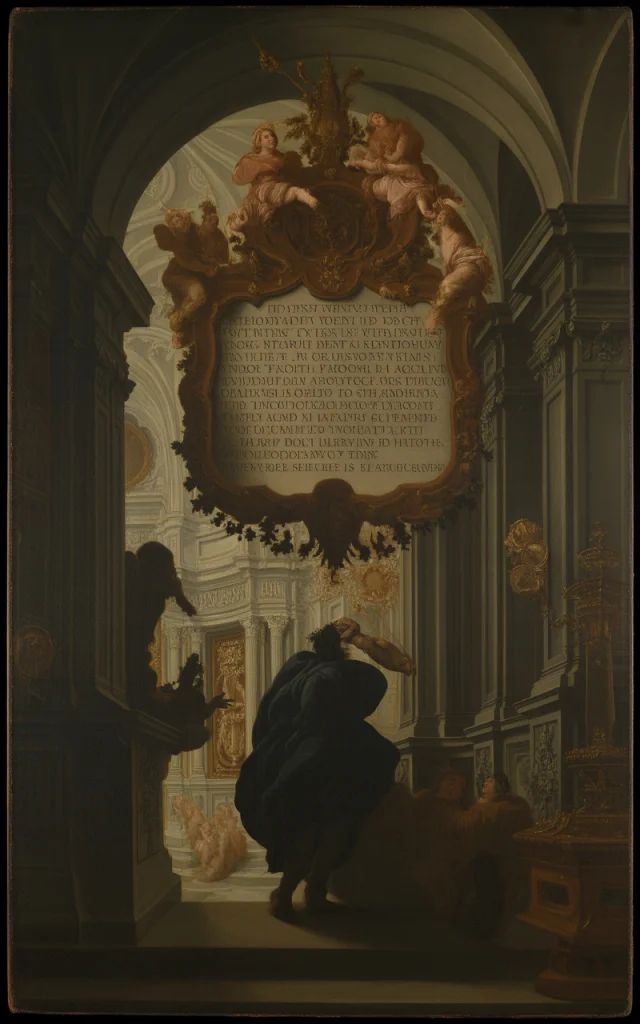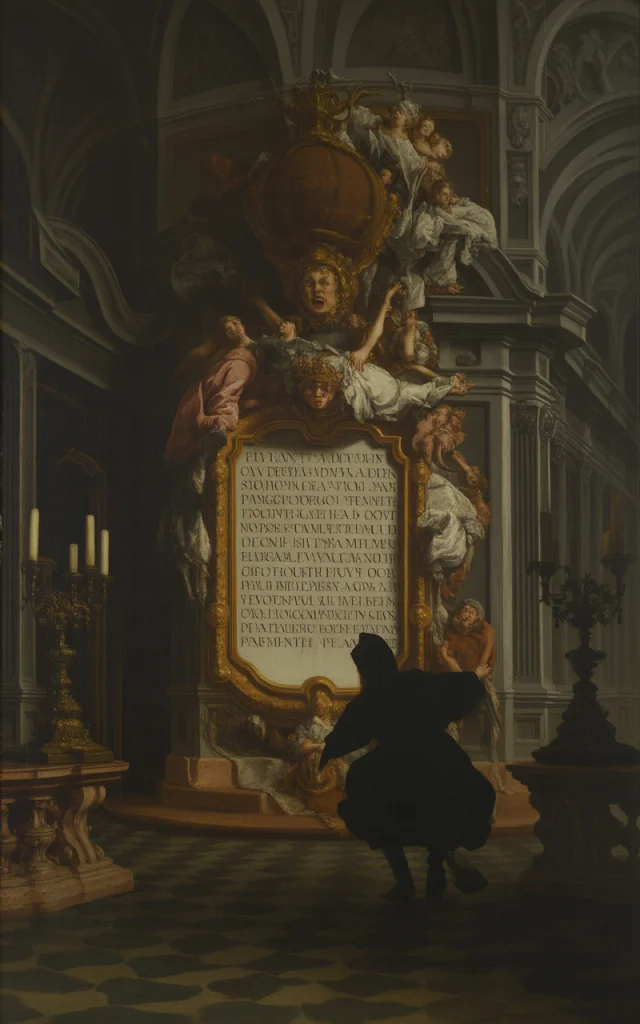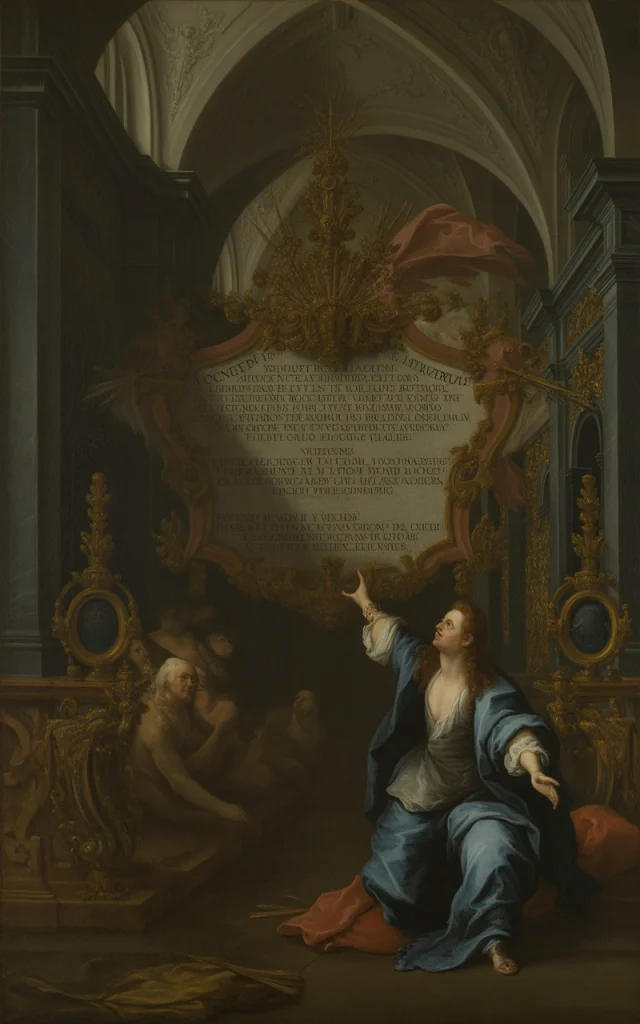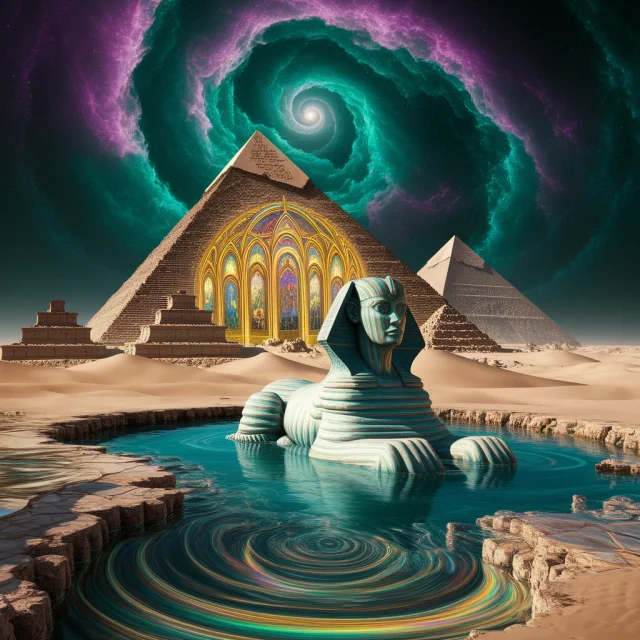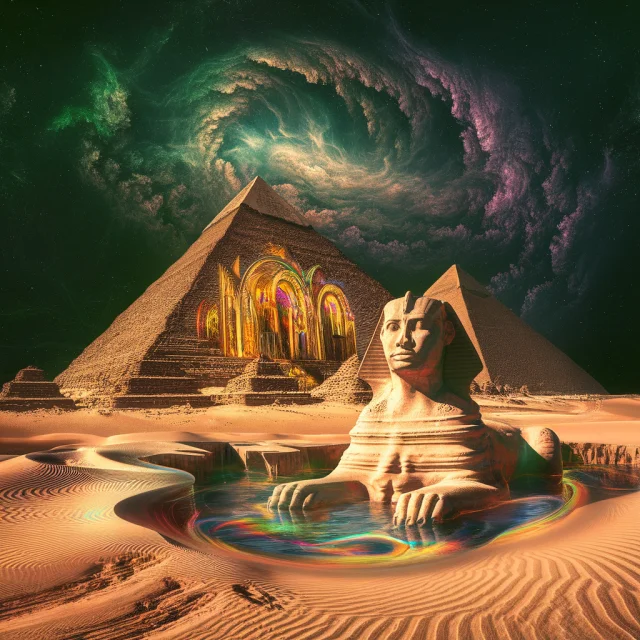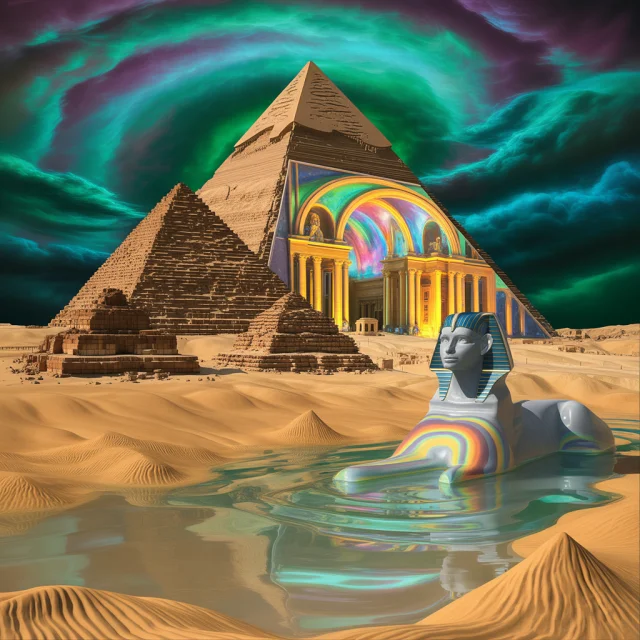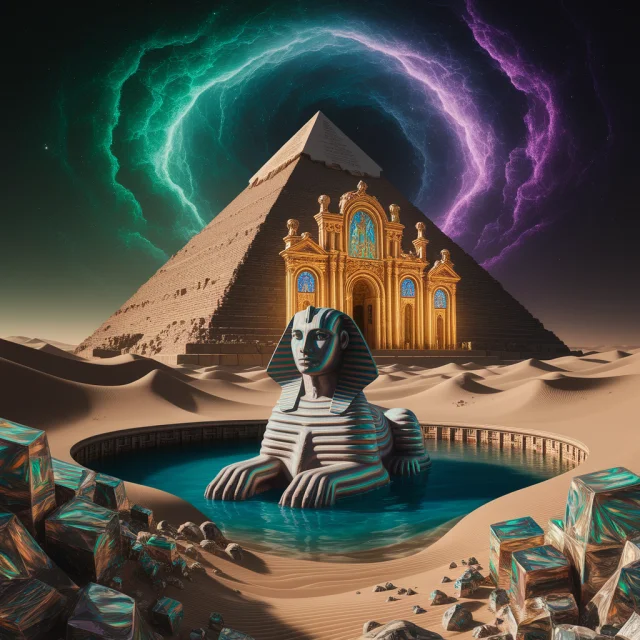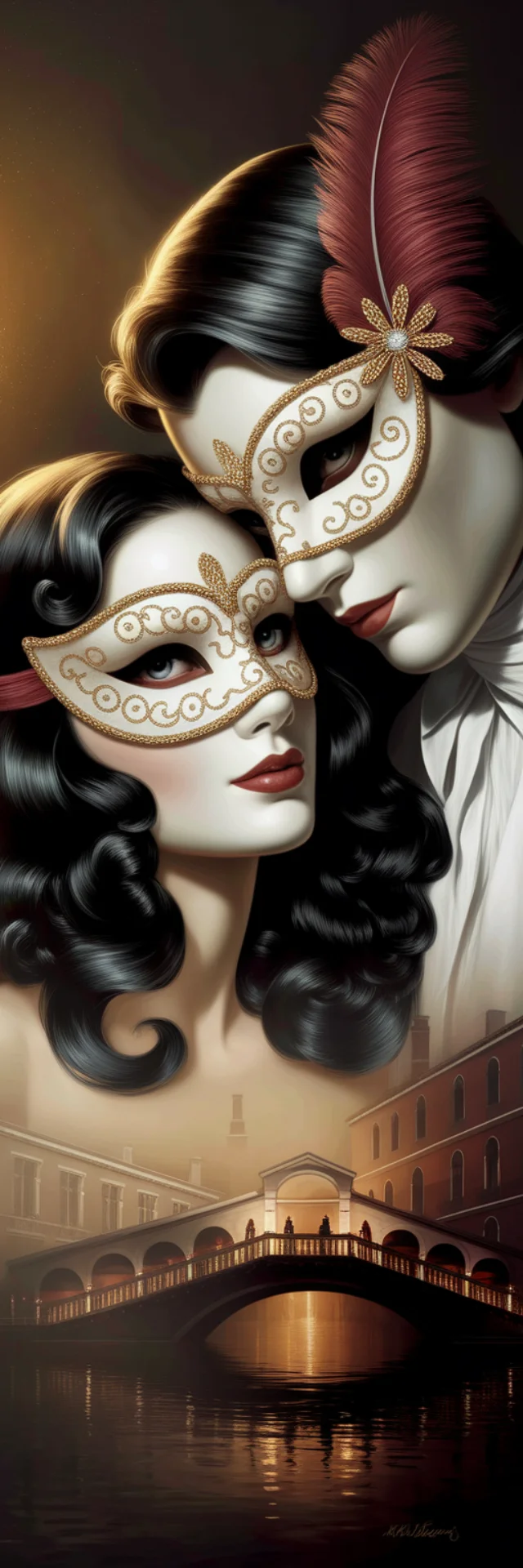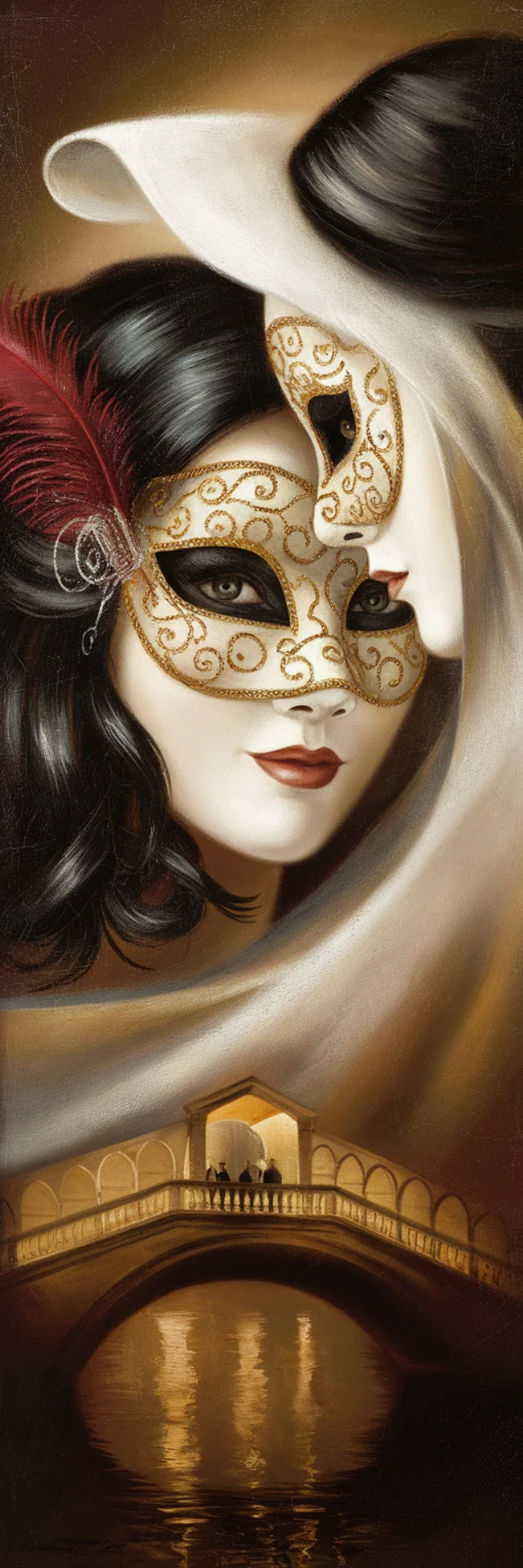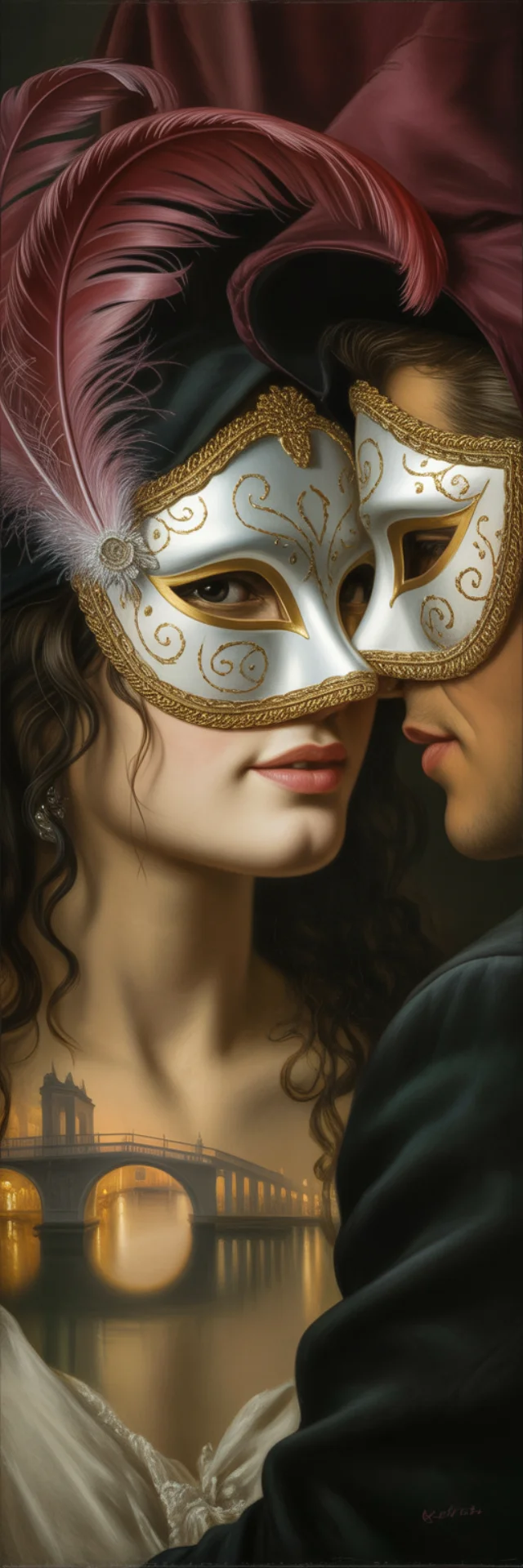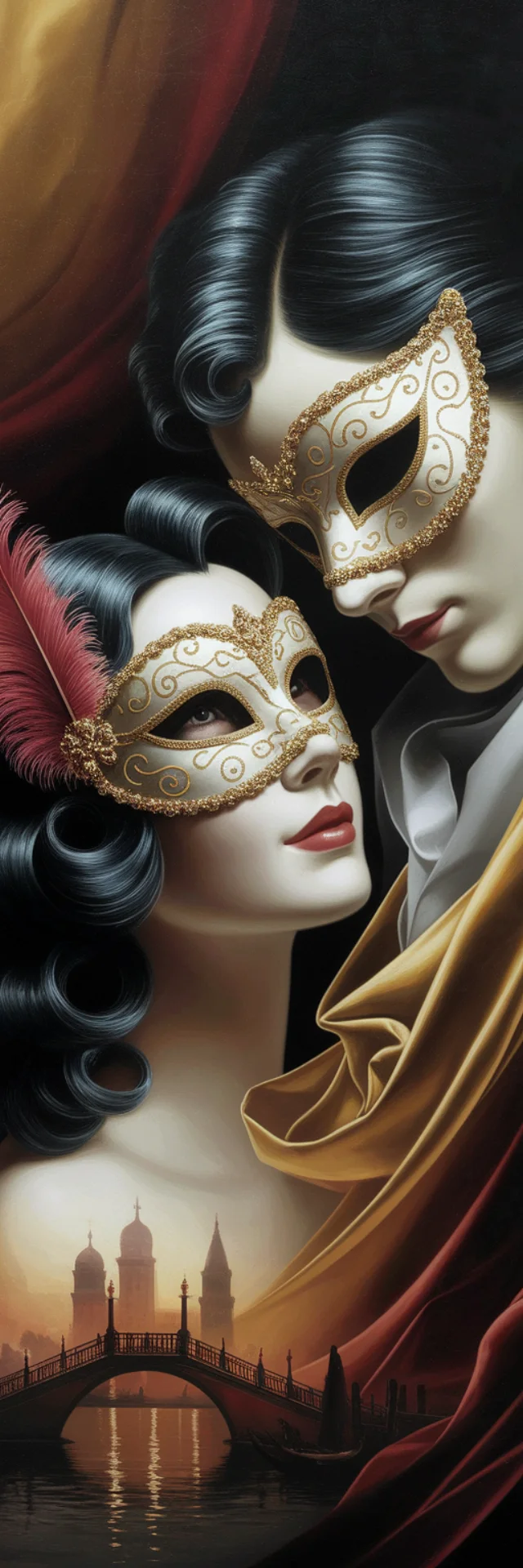In the grandiose canvas of the 17th-century Baroque painting, we witness the In a 1600s dark Baroque painting, the scene would be dramatically altered. Instead of a vintage neon sign, the focus might shift to a grand architectural setting, perhaps a dimly lit cathedral or a majestic palace interior. The lighting would be subdued, casting deep shadows and highlighting specific elements of the composition. The central element of the scene, the "CENTRAL" sign, would be transformed into an ornate inscription carved into stone or wood, adorned with intricate details and surrounded by elaborate decorative motifs characteristic of Baroque art. The silhouette of the person would be reimagined as a mysterious figure emerging from the shadows, with exaggerated gestures and poses that evoke a sense of drama and emotion. The color palette would consist of rich, deep hues such as dark blues, velvety blacks, and earthy browns, creating a sense of opulence and depth. The overall atmosphere would be one of grandeur and theatricality, drawing the viewer into a captivating narrative filled with symbolism and allegory, typical of Baroque painting., painting
Explore Ideogram's capabilities in AI Baroque painting generation across versions 2a, 2.0, and 3.0. Each version interprets the grandeur of 17th-century art differently. We analyze their strengths in capturing dramatic lighting, ornate details, and theatrical compositions, key aspects for authentic AI Baroque painting generation. Discover which version best brings historical artistry to life through AI.
